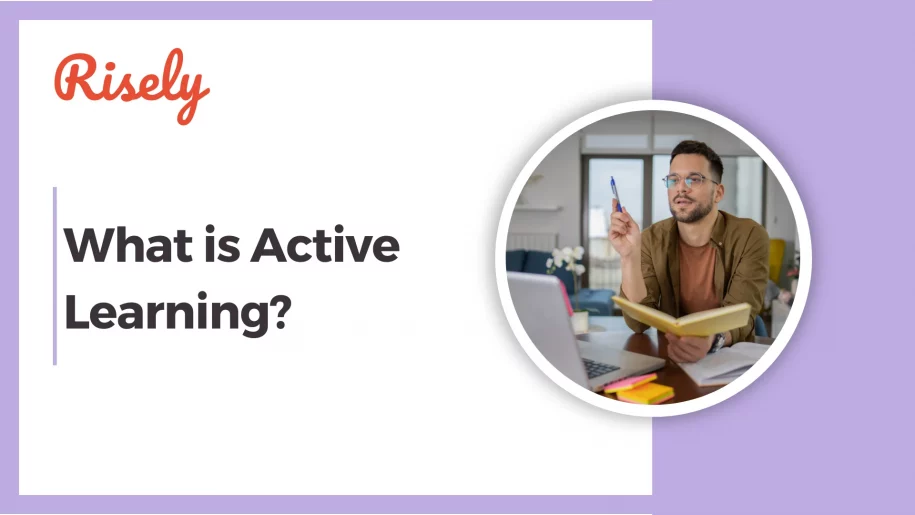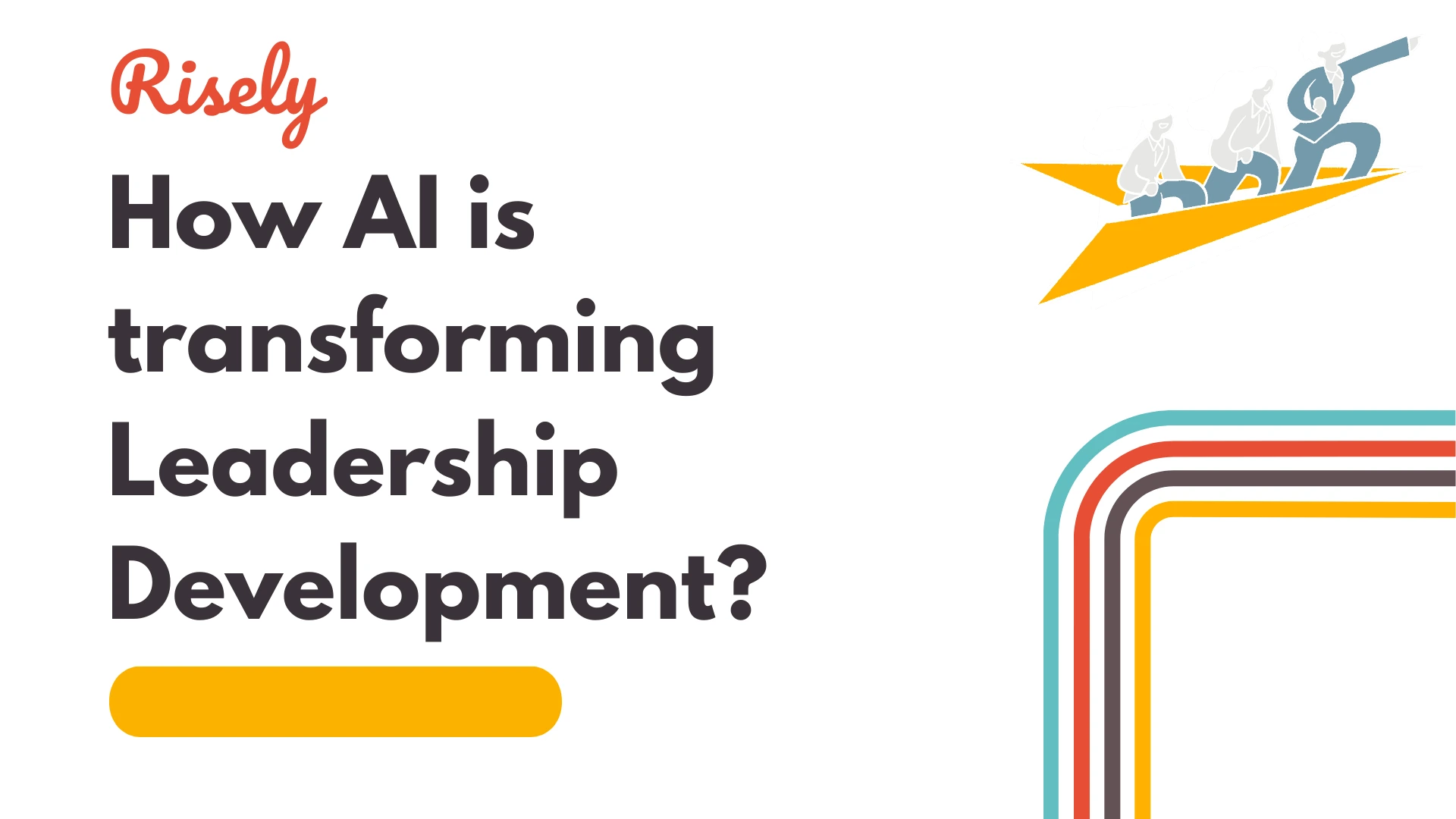What Is Active Learning? How To Use It At Work?
The old way of simple lectures and too much information is behind us. Now, active learning techniques are a great method to boost student learning and improve the overall learning process. This blog looks at what active learning is, its advantages, and how to put it into practice at work for your team’s success.What is active learning?
Active learning is a big change from old, passive learning methods. Instead of just taking in information, workers are asked to take part in the learning process. This way of learning shows that real understanding comes from doing, asking questions, and getting involved with the subject matter. It is a sure-shot way to beat one of L&D’s common challenge, that is, disengagement with the learning material that many teams face. Active learning matches well with theories about how adults learn. These theories highlight that it’s important for your learners to have experiences, find relevance in what they study, and actively take part in learning. Adults learn better when they can connect new information to what they already know and use it in real life. In contrast to passive learning, active learning gets people involved in solving problems, thinking critically, and working with others. This approach helps them understand the course content more deeply. By focusing on the needs and interests of adult learners, you build a better learning environment that is more engaging.What are some examples of active learning at work?
Examples of active learning activities for adults include group discussions, case studies, simulations, and role-playing. The main idea is to create tasks that make the participants in your learning program think critically, solve problems, and use their learning in useful ways. For instance, Sarah, a product manager, needed her team to learn a new project management software. Instead of a traditional training session, she structured it this way:| CONNECTING TO EXISTING KNOWLEDGE “I know most of you already use Trello for personal tasks, and some use Asana at work. Let’s start by comparing how you organize your current projects, and then I’ll show you how those same principles apply in our new software.” APPLYING TO REAL WORK Instead of using generic examples, she had the team do simple tasks like migrating their actual current project into the new system, setting up their real upcoming sprint, creating templates based on their most common workflows, and customizing dashboards for their specific needs MAKING IT RELEVANT When teaching new features, she tied each one to their daily challenges: “Remember how we struggled to track dependencies last month? Here’s how this feature would have solved that problem…” “This automation will save you those 30 minutes you spend each week updating status reports…” BOOSTING ENGAGEMENT Team members shared their own productivity hacks and they identified process improvements based on new capabilities. Ultimately, everyone contributed to creating team best practices and they immediately saw time savings in their actual work! |
Why should you choose active learning over other methods?
Adult learning theories, like Malcolm Knowles’ andragogy, highlight how important it is for learners to be in charge of their own education. They also focus on learning through experiences and making sure what they learn connects to their personal goals. Active learning fits well with these ideas by giving your learners control, thus raising the level of satisfaction and trust. When adults take part in activities, they can use what they already know. They can apply new knowledge to real life. This makes learning meaningful and shows how relevant it is. It also boosts their motivation and engagement. Active learning is becoming more popular in training at work. It works well for adult learners because it meets their specific needs. It shifts away from the old-fashioned, mentor-focused way of learning and promotes a more learner-focused experience. This helps create a deeper and more valuable learning experience.Other Interesting Reads
How can you implement active learning at work?
Using active learning at work does not need a big change in your training programs. You can begin by finding ways to add interactive parts to what you already have and enhance the impact of your learning and development strategies. Even small changes can help. Think about what you want to learn and the topic you are teaching when choosing active learning activities. To make a more lively and interesting learning environment, encourage your team members to work together and share knowledge.#1 Identify opportunities to use active learning with your team
The great thing about active learning is that it can fit in many different places. It works well in many formats. When you look for chances to use it in your organization, think about:- Onboarding: Instead of giving new hires too much information at once, use icebreakers, group work on real situations, or mentorship programs. This helps them engage early.
- Team Meetings: Set aside time for brainstorming, solving problems, or discussing case studies related to current projects. This encourages active participation.
- Training Workshops: Avoid dull presentations. Add group activities, quizzes, role-playing, or simulations to make the training more interesting and effective.
#2 Choose the active learning methods that match your needs
Active learning in the workplace thrives on practical, hands-on methods that connect directly to daily work. One of the most effective approaches that you can try is case study workshops, where teams tackle real business challenges using actual company data and scenarios, developing solutions they can implement immediately. This pairs naturally with peer teaching sessions, where employees share their expertise through 15-30 minute demonstrations followed by immediate practice and feedback sessions. You can also create skill application sprints provide focused learning opportunities, with teams mastering one new skill each week through deliberate practice and progress tracking. This approach works particularly well with interactive tech training, where employees learn new tools by completing actual work tasks while receiving live support and building an internal knowledge base. Regular reflection sessions, typically 15 minutes weekly, help your teams review what worked, capture lessons learned, and plan implementation steps. Active learning works best when your employees feel they own their learning. They should not be afraid to ask questions or seek help if they need it. It is also important to have regular feedback and open talks between employees and trainers. This helps everyone improve.#3 Take a helping hand from tech
Technology is important for improving active learning. It gives us access to many learning resources and tools. Online platforms and team software allow employees to join in exercises, simulations, and group projects anytime and anywhere. Video conferencing tools like Zoom and Microsoft Teams allow live sessions. You can have discussions in breakout rooms and get real-time feedback. Collaborative platforms such as Google Workspace and Microsoft 365 let people edit documents together, manage projects, and brainstorm online. But that’s just the beginning! For example, instead of regular pen-and-paper quizzes, use online quiz tools. They provide instant feedback and fun game features. You can change case studies into simulations where employees make choices and see what happens safely. Similarly, you can enable role play training for everyone in your company with the help of AI coaches like Merlin.#4 Consider resistance and approach with an open mind
Implementing active learning can be tough. One big challenge is that some employees resist change since they are used to traditional, passive learning styles. To overcome this resistance, you need to communicate the benefits of active learning clearly. Similarly, to get buy-in from the C-suite, focus on showcasing how it enhances skills, boosts engagement, and leads to better outcomes. Providing training and support during the transition can also help employees adapt smoothly. Another common challenge is time constraints. To address this, integrate active learning into existing processes or shorten activities without compromising on effectiveness. Prioritize activities based on their impact and relevance to maximize learning in limited time frames. At times, something interactive can save you from hours of lectures, so ensure that you are leveraging this technique with your teams effectively.Wrapping Up
Active learning helps adults grow by making their education more engaging. When you use active learning strategies, you create a workplace culture that focuses on constant improvement and new ideas. Using technology makes these strategies even more effective. This leads to real benefits for employees and the organization. By adopting active learning in your workplace, you can give your team the skills and knowledge they need. This helps them adapt and grow in today’s changing business world.Get Started with the Free Training and Development Plan Template!
Grab free L&D resources and more for holistic growth of people managers.
Only on Risely.
AI and Leadership Development: Driving Synergy for Growth
AI and Leadership Development: Driving Synergy for Growth You know the frustration all too well. Your organization invests thousands in…
How Are AI Learning Platforms Transforming Leadership Development?
How Are AI Learning Platforms Transforming Leadership Development? As an L&D leader, you’re likely familiar with this frustrating reality: 82%…
5 Essential AI Skills for L&D Leaders
5 Essential AI Skills for L&D Leaders According to LinkedIn’s 2025 Workplace Learning Report(1), 71% of L&D professionals are now…
How to Create a Course with AI: A Guide for L&D Professionals
How to Create a Course with AI: A Guide for L&D Professionals According to a McKinsey survey(1), only 11% of…
Building an Ultimate Leadership Development Action Plan
How to Build a Leadership Development Action Plan? Having a strong Leadership Development Action Plan is more critical than ever…


